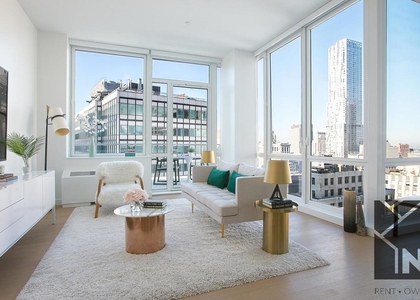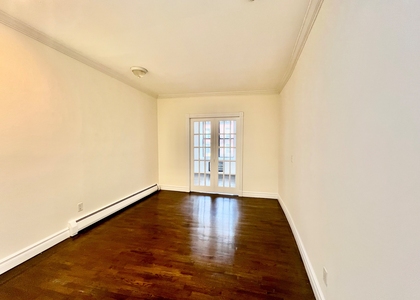
Photo by Patrick Tomasso on Unsplash
NYC Apartments for Rent
The hardest part of living in the city is finding that special place to call home. Although New York is one of the most expensive cities in the world, there are always neighborhoods with great deals, new housing options, and an expansive public transportation system that serves well over a million commuters per day.
Among many other things, New York is home to the financial and fashion capitals of the world. Paul Graham famously wrote that all great cities send a message in 100 subtle ways. Here in NYC the message is “strive for greatness.” Whether it's art, business, or education, New Yorkers have no shortage of ambition and the drive to achieve their goals. You have to hustle to make it in this city, but if you do you can live the New York life you’ve always dreamed of.
In almost every industry, career prospects for young millennials in Manhattan are better than anywhere else in the world. Finance, Law, Art, and Marketing immediately come to mind, but they’re far from the only innovations NYC has to offer. In the past decade alone, the city has made even greater strides as a technology hub. With Google's headquarters in Chelsea and the rapid startup growth in Brooklyn, New York now easily rivals Silicon Valley and SF as the country's destination for software engineers with big ideas.
While a population of over-achievers might seem too intense for relaxation, New York City actually sets the standard for world class entertainment and museums. One can admire the Matisse collection at the Museum of Modern Art, stroll through the old Sheep Meadow at Central Park, have afternoon tea overlooking Columbus Circle, and watch a Broadway matinee all in one afternoon; leaving the rest of the day to explore the NYC nightlife.
Running 24/7 and transporting millions of people daily, the public transportation system is expansive and may seem intimidating at first. However, once you get the hang of it, the subway will soon become your best friend. The MTA (Metropolitan Transit Authority) charges a single fare between any two destinations, whether you are traveling one stop between Times Square and Herald Square (a 10 minute walk), or from Columbia University's medical school campus to JFK International Airport (a 19 mile trek). There are also flat rates for weekly and monthly metrocards as a way to save money for those commuting in the city on a regular basis. These cards also work for those who take the bus.
For those living farther away, there are several light rail trains that serve folks to the North (Metro North), East (Long Island Rail Road), and West (the New Jersey PATH train). Those who live due South of Manhattan can take a ferry (The Staten Island Ferry and New York Waterways ferries).
NYC has also seen a dramatic increase in support for bikers in the last decade. Countless miles of new bike lanes have been added to the streets of New York in an ongoing project that prioritizes safety. Citibike also came online in 2013 providing short-term rental bikes with docking stations all over the city (just don't keep it for longer than 45 minutes). While biking alongside hectic New York traffic is not for everyone, a bike during rush hour can often be faster than any other mode of transportation, especially when there is no direct subway line to your destination.
If you’ve seen a movie about New York City that’s set in the 70’s or 80’s, then you probably don’t have very high hopes for the crime stats. However, contrary to popular belief, numerous studies have deemed New York one of the safest metropolitan areas in the world. Violent crime rates are consistently low and the city has taken many precautions to protect citizens and tourists from COVID-19.
- Manhattan: The borough people think of when they think of NYC. Named after the Lenape word meaning “place to gather wood for bows,” this island is home to The World Trade Center, Broadway, and Central Park.
- Brooklyn: Incorporated into New York City in 1898, this borough is the place to be for emerging art and unique culinary experiences. Home to the Barclays Center, BAM, and the Botanical Gardens, Brooklyn has a unique vibe that can’t be matched.
- Queens: The largest borough in NYC in terms of landmass, Queens is famous for its Greek food and culture. Rapidly expanding, this borough is quickly becoming the new, cool place for new New Yorker’s to plant roots.
- The Bronx: Once home to Edgar Allen Poe, The Bronx is a cultural hotbed and considered pivotal to the creation of hip-hop. Home to The Bronx Zoo and Yankee Stadium, this borough is home to some of NYC’s number one attractions and continues to be a strong influence on art in America.
- Staten Island: Known as “the greenest borough” Staten Island is home to over 170 parks. With a more suburban vibe, Staten Island might seem like the odd man out. However, the museums, parks, and attitude are all 100% NYC. So take the ferry and go exploring.
- Take a walk on Highline Park; best to start in Chelsea and head north an hour before sunset.
- Thirsty for a cocktail? Find one of the legendary NY speakeasy bars; you can cheat now using Yelp.
- Shopping in Manhattan is good in almost any neighborhood, but SoHo and 5th Avenue are especially noteworthy for luxury brands.
- Everyone loves the big museums, from MET to MOMA. For something a bit different, check out the Museum of Chinese in the Americas, or the Tenement Museum in the Lower East Side.
- Like every tourist or new New Yorker, walk the Brooklyn Bridge, grab a pizza from Grimaldi's once you reach the other side.
- Are you a sports fan? Check out a game at Yankee Stadium in The Bronx or Citifield in Queens for a Mets game.
Originally home to the Lenape peoples indingious to the region, Manhattan was colonized by the Dutch and named “New Amsterdam'' in 1653. One structure from that era, the Wyckoff House in modern day Brooklyn, still stands to this day as the oldest building in New York. By 1665, the island was under British rule after a relatively peaceful exchange.
In 1765, the first organized effort of American colonists against British rule occurred when the Stamp Act Congress was formed in New York. The revolution began a little over a decade later with Long Island and New York City being strategic centers for both the Americans and the British. The last of the British army fled the island as George Washington returned to take it in 1783.
From there, New York became the first capital of the United States in 1789, but lasted less than a year due to Philadelphia taking the reins in 1790. Afterward, the city’s population exploded due to immigration, leading to massive expansion during the 1800’s. By 1898, the “Greater New York” plan incorporated independent cities and transformed them into the boroughs we know today.
New York City has become the center of the financial world and a major player in the art and tech industries. Currently, New York is the largest city in the United States. 1 in about 38 people in the US live in NYC and over 40% of the city’s population speaks more than one language. NYC is home to the United Nations Headquarters which opened in 1952 and we have better pizza than Chicago.
For those interested, New York currently has
21,921 residential listings advertised on the market for rent.
Listings for rent in this area typically have an median of 780 square feet.
From data that we've compiled, listings range from $3,400 in the lower quartile to $5,638 in the upper quartile.
Generally speaking, the median rental price is around $4,200 or $6.67 / sqft.
For those interested in renting a listing in New York, there are currently 4,370 studio, 7,597 one-bedroom, 6,312 two-bedroom, 2,751 three-bedroom, and 891 four+ bedroom apartments available for rent.
For your convenience, we've included a more detailed breakdown of rental pricing by median bedroom sizes here:
| Bedrooms | Rent | Rent / sqft |
|
|
| Studio |
$3,430
|
$7.44
|
| 1 BR |
$4,147
|
$6.63
|
| 2 BR |
$5,000
|
$6.36
|
| 3 BR |
$5,495
|
$5.58
|
| 4+ BR |
$7,900
|
$6.06
|
We make sure to refresh our rental listings every hour in order to provide you with the newest and most up-to-date inventory available on the market.
New York is located within the New York - Newark, NY - NJ - CT Urban Area.
This area currently has 18,812,161 residents in
6,707,347 households.
Out of the total population, 40.12% of the residents speak another language at home instead of English.
The majority of the inhabitants in this urban area are currently unmarried and have a median age of 38.
When looking at residents older than 25, around 25.16% have graduated from high school, 22.38% have a bachelor's degree, and 15.92% have obtained their master's degree or above.
Employment rate is typically around 59.7% and the median income in this urban area is $68,319.
At least 50.07% of those living in this urban area are renting their homes.
Most residents will commute to work by car with an average commute time of 36 minutes.

























